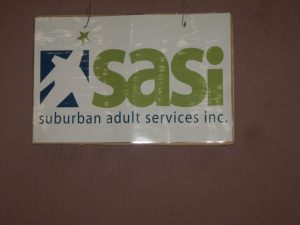It’s fate that I write for Harlequin. Their distribution center is only a few miles from my childhood home in Western New York. It’s only natural that on a trip home this summer I made a stop by the plant to see exactly how the manuscript in my computer turns into the beautiful product that gets into a reader’s hands. But if not for the thoughtful effort of a high school cross country teammate and the miracle that is Facebook, I would have missed this great opportunity.
![IMGP4707 [1600x1200] They Sang "Name"](http://www.gerikrotow.com/WP/wp-content/uploads/2010/08/IMGP4707-1600x12001-225x300.jpg)
It started back in May when Dave Genoccro, Quality Control Manager for HDC, noticed on Facebook that my career is “novelist” and that I write for Harlequin. Dave shot some great photos of my June 2010 book on the palettes in the warehouse and shared them on Facebook. That lead to Dave’s boss and HDC General Manager John Reindl suggesting that I stop by the next time I’m in town. Little did John know I was already planning a trip home. After all, my Dad was having a significant birthday (he still looks 35) and the Goo Goo Dolls were playing Darien Lake the same week. What goes with Dad’s birthday, The Goo Goo Dolls, and writing? A tour of the Harlequin Distribution Center, of course!
![IMGP4629 [1600x1200] Dad's Big Birthday](http://www.gerikrotow.com/WP/wp-content/uploads/2010/08/IMGP4629-1600x12001-300x225.jpg)
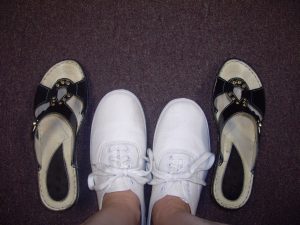
We started the tour at the area where Harlequin is now able to print smaller batches of books as needed, to meet or top-off print-runs. Usually the actual printing for the 100 million Harlequin books handled by HDC takes place at a separate printing facility, Quad Graphics, located nearby. In the past it wasn’t uncommon to have an “overage” on the run–meaning anywhere from a few hundred to thousands of extra books printed of a title that never sold. Today Harlequin is able to have a tighter print-run and distribution by using an in-house system that’s not quite “print-on-demand” but enables less waste in terms of paper and time.
Next we walked through the order fulfillment area where dedicated workers sort all incoming mail orders, and where online orders are processed as well. It’s an amazing thing to see so many hands working to make sure each reader gets what they’ve asked for–and often more. Harlequin is known for sending out incentive gifts to readers, like wine glasses or figurines, but more importantly, Harlequin makes efforts to introduce readers to new authors or series they may like based on what they’ve purchased in the past.
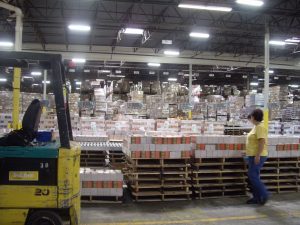
It was a thrill to see my book on the shelves, and to see where copies of it wait to be shipped out to a waiting reader. It’s one thing to write a book and try for years to sell it. A thrill like no other. But I have to admit that realizing my book is given such attention, right along with New York Times bestsellers Debbie Macomber and Susan Wiggs, and more recently USA Today bestselling author Kristan Higgins, was at once humbling and thrilling. Another affirmation that “yes, I’m watching my dreams come true!”
I was fascinated by the mail sorting area where a computer and conveyor belt join through space-age technology and sort boxes of books into the correct bins in order to place the books deeper into the US Postal system. John pointed out that the deeper Harlequin can get the books into the postage (e.g. sending them to the right USPS center first, instead of just out locally) it saves Harlequin money. And that in turn, to me, could mean that the price point of the books stays lower and readers can get more for their money. I’m not an economist, but as a business woman it makes sense to me.
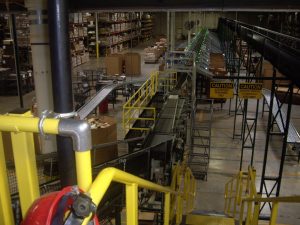
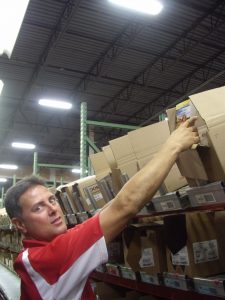
I was especially impressed by the massive recycling effort run by HDC for returns and books that don’t make the quality control cut. Each novel produced in the HDC is touched by at least one set of human hands if not more. Special stickers like WalMart or KMart discount prices are put only on books that make the quality cut–everything from the cut of the cover, pages, and book inserts are checked for accuracy. The employees affectionately refer to the paper recycle machine as “The Tin Man.” I apologize for the poor quality of the photo, but I think it gives you the idea of the scope of HDC’s positive environmental impact nonetheless.
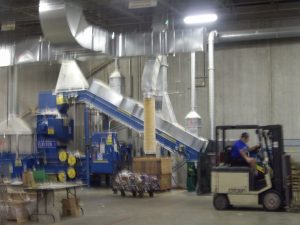
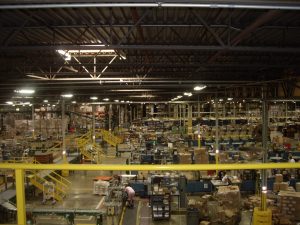
Another positive community innovation at HDC is the Suburban Adult Services which involves giving employment to mentally challenged or disabled adults in Western New York. I met the group working the day I toured as they were loading books into huge cardboard containers for future shipping. It makes me proud that my publisher isn’t only about global romance and passion, but also passionate for the community in which it does business.
![IMGP4617 [1600x1200] Dave Genoccro, Me and John Reindl](http://www.gerikrotow.com/WP/wp-content/uploads/2010/08/IMGP4617-1600x1200-300x225.jpg)
